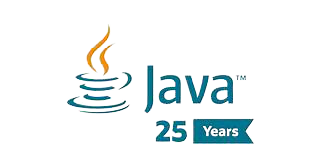Course Overview
This eLearning Bundle includes these 2 courses:
- Java Programming Basics
- Java SE 9
Course Topics
Java Programming Basics – 4:32 hours
Java Programming Basics teaches core Java fundamentals quickly and easily so you can get started programming today. In this course, expert programmer and trainer Simon Roberts introduces the concepts and techniques of Java, as well as the basics of object orientation. You’ll learn the fundamental syntax and how to work with objects, variables, loops, and libraries. You will then practice your skills by creating a chat program from the ground up. This course is step one on your road to becoming a skilled Java developer, with all the exciting possibilities that offers. Major sections are as follows: Lesson 1: Learning Java Lesson 2: Procedural Java Lesson 3: From Structures to Objects Lesson 4: More About Objects Lesson 5: Java IO Libraries and Exceptions Lesson 6: Creating a User Interface Lesson 7: Creating a Chat Program About the Instructor: Simon Roberts started his computing career as a programmer in the early 1980s and built several of his own microprocessor-based computers. He moved to Sun Microsystems, Inc. in mid-1995 and almost immediately became the leading Java instructor in the U.K. In 1998, Simon moved to Colorado, where he still lives. While at Sun, he created the Sun Certified Programmer, Developer, and Architect certifications, and worked in teams on several other certifications. He has written three books on Java, including two certification study guides: one covering the Programmer and Developer exams, and one covering the Architect exam. He left Sun in 2004 and became an independent instructor, architect, and software engineer.
Introduction
Learning Java
Procedural Java
From Structures to Objects
More About Objects
Java IO Libraries and Exceptions
Creating a User Interface
Creating a Chat Program
FEATURES
- Video
Java SE 9 – 30:30 hours
Welcome to the Java 9 Master course. whether you’ve programmed before or never had programming experience, by the end of this series you’ll be able to write sophisticated real world java applications. This course will cover installing Java, Eclipse, Intellij and then give an introduction to their uses. Next we’ll talk about java, how to use the IDE and explain basic operators and loops. After that we’ll get you going on classes and objects. it covers inheritance, constructors, overloading and exceptions. Next we’ll cover class design and functionality, polymorphism and then finishes with arrays, arraylists and hashmaps. Autoboxing, enumerations and how to use generics in your code will be covered next, followed by explaining how interfaces allow a bridge to handle inheritance as well as Input/Output and TreeSets. Next we’ll cover how to start using the graphical user interface in java. it covers Swing and proceeds to use Swing to make a flashcard Application to show all the features.
This course will introduce you to JavaFX. It will also cover controls as well as effects and transforming your controls to give your application more life. It will finish with the JavaFX Application lifecycle and how to use SceneBuilder. Then we’ll cover how to create an application login as well as the Details UI in the application, as well as Lambda Expression syntax and how it makes writing your code easier. it also covers an introduction to CRUD operations in Databases as well as an introduction to how threads work in Java. Then we’ll cover your Project Setup and how to structure your database as well as Setting up user login and the Database handlers. We’ll then move on to errorfields and animation as well as FXML views and tasks. It finishes with how to save tasks and customize list view and cells, how to customize list rows, and the tasks by listview, how the application deletes, updates and wraps up, and a refresher on World Wide Web technologies. It then introduces the Vaadin environment as well as how to use Springboot. It starts an application for a weather application also covering how to integrate libraries like OKHTTP as well as how to parse JSON. This course finishes out the weather application fleshing out the User Interface as well as how to update it and make it into a final finished application.
Java SE 9, Part 1 of 14: Install and Introduction
Java SE 9, Part 10 of 14: Project Setup and Login
Java SE 9, Part 11 of 14: Errors and Listview
Java SE 9, Part 12 of 14: Custom Lists and Updates
Java SE 9, Part 13 of 14: Vaadin and HTTP Introduction
Java SE 9, Part 14 of 14: Weather Application
Java SE 9, Part 2 of 14: IntelliJ and Operators
Java SE 9, Part 3 of 14: classes and Objects
Java SE 9, Part 4 of 14: Composition and Arrays
Java SE 9, Part 5 of 14: Interfaces and Streams
Java SE 9, Part 6 of 14: Swing and Flashcard Application
Java SE 9, Part 7 of 14: Intro to Java FX
Java SE 9, Part 8 of 14: Application Login
Java SE 9, Part 9 of 14: Expressions, DB and Threads
FEATURES
- Inline Activities
- Supplemental Resources
- Video


